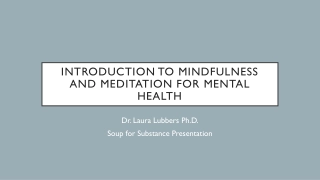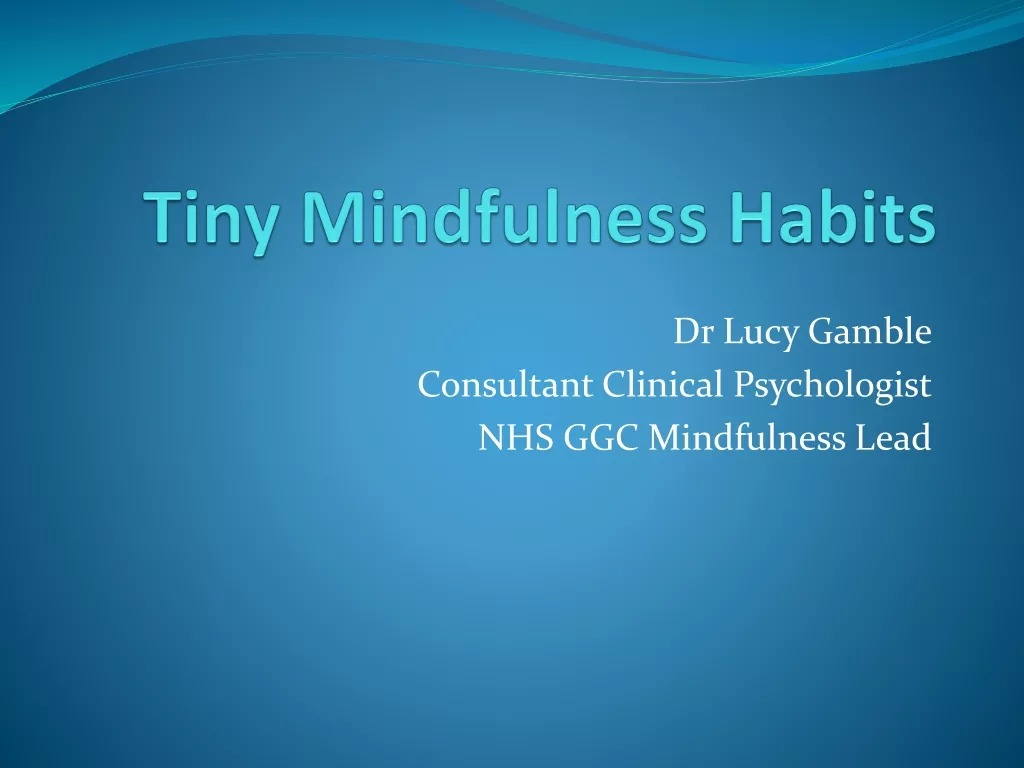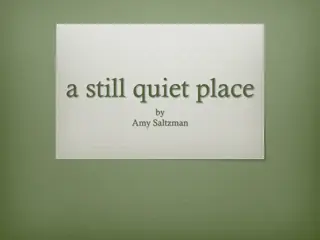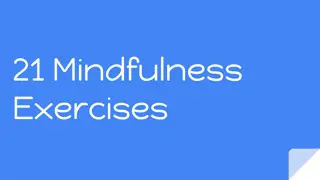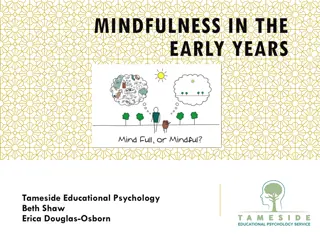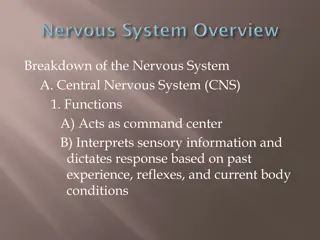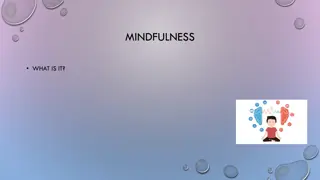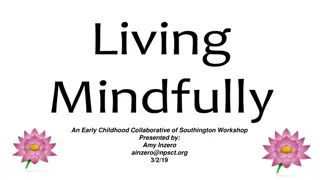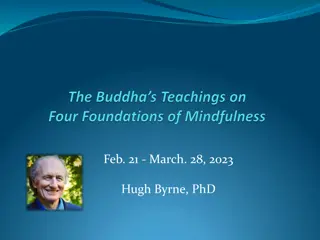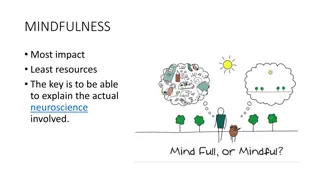Somatic Embodiment and Mindfulness
This book by Elaine Gallas, LPC, delves into somatic embodiment and mindfulness practices to help readers effectively manage stress and regulate their emotions. It offers practical strategies that can be incorporated into daily routines for improved well-being and emotional balance.
Download Presentation

Please find below an Image/Link to download the presentation.
The content on the website is provided AS IS for your information and personal use only. It may not be sold, licensed, or shared on other websites without obtaining consent from the author.If you encounter any issues during the download, it is possible that the publisher has removed the file from their server.
You are allowed to download the files provided on this website for personal or commercial use, subject to the condition that they are used lawfully. All files are the property of their respective owners.
The content on the website is provided AS IS for your information and personal use only. It may not be sold, licensed, or shared on other websites without obtaining consent from the author.
E N D
Presentation Transcript
Somatic Embodiment and Mindfulness Practical Strategies for Stress Relief and Regulation Elaine Gallas, LPC
Somatic therapies and how they work What is somatic embodiment Connection between body and mind The art of noticing sensations that arise in the body - attuning to inner wisdom to help with processing emotions and managing stress Different nervous system states (graphic on next page) Sympathetic - fight, flight, freeze Parasympathetic - Vagal (safe, social, engaged) and dorsal (shut down) Different forms of regulation (up, down, co-regulation) Our nervous systems communicate Applications for kids, i.e. role modeling regulation; regulation breaks for optimal brain function Goal of expanding window of capacity Being with discomfort plus resourcing expands window of capacity/resilience Resourcing signals safety to the brain and grounds us in the present moment (mindfulness) The Body Keeps the Score, Polyvagal theory, Somatic Experiencing Bessel Van der Kolk, Stephen Porges, Peter Levine Wilhelm Reich (somatic psychotherapy)
How Somatic Embodiment intersects with Mindfulness What is mindfulness The practice of bringing awareness to here-and-now, the present moment, without judgment Observing thoughts without judgment or attachment Connecting to body/sensations (somatics) Acceptance Somatic embodiment is mindful in nature in that regulation strategies signal safety to the nervous system allowing us to land in ventral vagal state right here-and-now in the present moment Stress responses are often related to over-coupling with benign stimuli associated with a painful past experience (perceived threat when there is little to no danger)
Somatic Embodiment and Regulation Strategies Resourcing - signaling safety to nervous system Butterfly tapping, self-holding, shake-it-out, swaying, stretching Orienting Basic re-calibration strategy to bring nervous system back into ventral vagal Bi-lateral movement and stimulation Hands alternate squeezing (stress ball, squishy, something soft, etc.) Butterfly tapping Contra-lateral movement/neuroplasticity exercises Thumbs and index fingers Arms to a T (activates vestibular system forcing out of limbic) Ways to complete stress response cycle: Hands push opposite knee/thigh (push knees into elbows and push elbows/hands into knees Running legs/feet tapping
Tapping/EFT (Emotional Freedom Technique) A powerful brain rewiring technique, where modern neuroscience meets ancient wisdom Holistic healing technique based on combination of ancient chinese acupressure and modern psychology Focusing on discomfort/fear/problem while using fingertips to tap 5-7 times on 9 meridian points on the body Sends calming signals to the brain Setup statement examples while tapping on Karate chop point: Even though I feel this anxiety, I accept how I feel. Even though I m anxious about my interview, I accept myself and how I feel. Even though I m feeling this anxiety about my financial situation, I honor my feelings and give my body permission to relax.
Tapping points The basics of the tapping process are simple: Always begin tapping on the karate chop point while you repeat the set up statement to yourself. This allows you to be honest with how you feel and sets you up for the tapping process Begin tapping while focusing on how you feel or the problem. By doing this you send a calming signal to your brain, allowing you to think of the problem without feeling stress in your body. When you feel better you can move to more empowering thoughts. The same way you need to weed a garden before you plant seeds, you have to release the intensity of what you re feeling before more empowering thoughts can take root.
EFT/Tapping Let s break down the steps: Identify the problem on which you want to focus. It can be general anxiety or it can be a specific situation or issue which causes you to feel anxious. Consider the problem or situation. How do you feel about it right now? Rate the intensity of the anxiety on a scale of 0 to 10, with zero being the lowest level of anxiety and 10 being the highest. Compose a setup statement. Your setup statement should acknowledge the problem you want to deal with, then follow it with a phrase of acceptance. This helps neutralize judgments you have around how you feel and allow you to be more honest with your tapping.
Other mindful ways to regulate the nervous system Relaxation techniques: Breath work (17% more nitric oxide with nose breathing, naturally calms nervous system) 4-7-8 breathing Alternate nostril breathing Box breathing Grounding techniques: 5, 4, 3, 2, 1 Activate prefrontal cortex with categories, trivia, math (it may be hard at first, keep trying!) Body awareness
Discussion Any requests for other strategies covered in hand out Questions THANK YOU!


